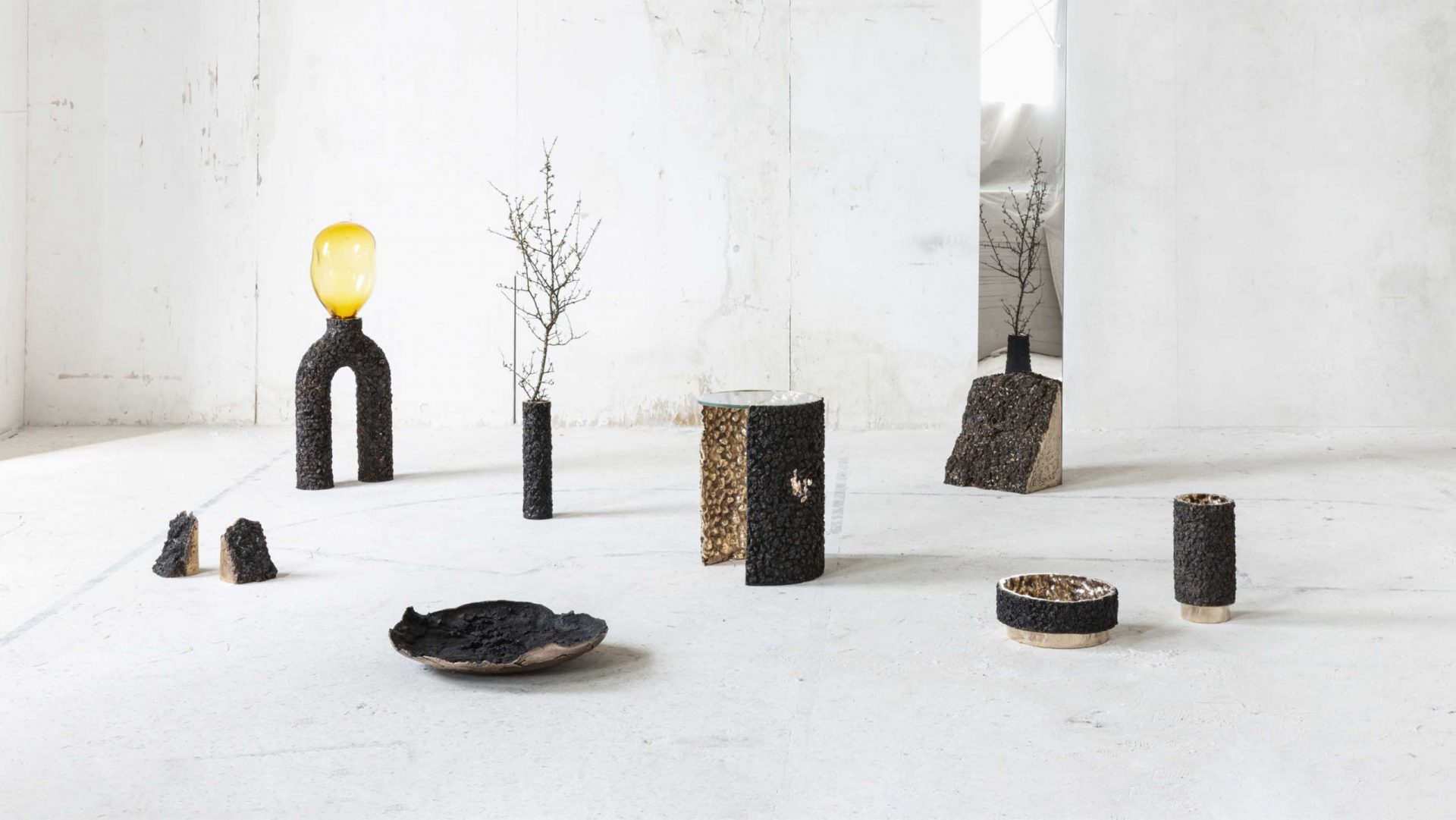Secondo Fuoco by Tipstudio enhances the slag residue of molten bronze

The Florentine duo aims at giving a second life to the byproduct of molten metal with furniture design.
“We have always been attracted by that foamy mass that emerges from the molten metal.” – Working since 2017, Tipstudio was founded by Imma Matera and Tommaso Lucarini who both graduated in product design at La Sapienza in Rome and ISIA Firenze respectively.
The studio aims at merging a more poetic-narrative vision of projects with a more material-artistic one. Florentine by adoption, the duo investigates strong material expressiveness to generate sensorial experiences by operating in different fields of design. Their complementary approach is a synthesis of continuous research based on dialogue and mutual criticism. Between design, art, and craftsmanship, their works are linked to the territories, social aspects, craft, and process adopted to create good design complicity and balance.


In their latest research on materials, they investigated the potential and usage of the slag that is an impure residue of molten metal.
“We have always been attracted by that foamy mass that emerges from the molten metal, like landmass whose nature fascinates and intrigues at the same time. In a way it’s as if the metal felt the need to regain possession of its mineral origin.” they explain.
“With the support of Fonderia Artistica Versiliese, we chose to focus on metals byproduct coming from the smelting process exploring its potential in a link between the traditional approach to foundry culture and the spontaneity of metals.”


Secondo Fuoco is the result of these previous investigations on metal spontaneity and the reuse of its byproducts.
“The project aims to revalue the slags by preserving its morphological conformation, its aesthetic, and its sensorial aspects without altering its state or nature. A dialogue between the different souls of the material: the glossy and shiny one with the more raw and material one. We looked to re-value something that it’s considered almost an enemy in the foundry field.”

In the foundry field, slag is the solidified foamy mass that floats on the surface of molten metal during the smelting process. It is a byproduct composed mainly of silicates of aluminium and calcium, rock components, and metal oxides derived from the melting process. It usually has no specific application so it will be thrown off at the end of the process. The Secondo Fuoco project aims at changing this obvious future.
According to the duo, different experimental production processes are adopted to look for structures and make slag more resistant, which despite its appearance, is quite fragile.

“In some cases, we used to work directly with the molten metal and the incandescent slag through a direct system that requires a very fast execution in which a low rate of metal is loaded with slag and poured onto steel molds.”
“In other cases, we work with them at the solid-state through an indirect system by using the lost wax casting process to obtain more complex designs. The solidified slags, which are very porous, are placed on a pre-designed mold and stick with wax one to another.”
Curious to know about other products made out of recycled waste? Don’t miss the Interview with Novoloop.

Going a little further into the details of the process, we asked the duo to give me a more step-by-step approach. Here is the recipe:
“Step 1: Slags usually appear as solidified foamy mass, so first of all, we catalog them by typology and morphology. Not all of them can be used; they might also present molten refractories, sand, and other inert materials that compromise the system adopted.“

“Step 2: After the materials are trimmed and milled in different grain sizes according to their use.
Step 3: The slags are then placed side by side in a pre-designed mould in an almost mosaic job and stuck with hot wax by filling the pores and locking all of them. “

“Step 4: After a long phase of re-melting of the superficial wax on the external side, done by scratching it away until the underlying slag is rediscovered, A Further Fire (Secondo Fuoco) will follow by running through the lost wax casting process.
The molten bronze takes the place of the wax and acts as a binder and structural element by filling the slag’s pores, making them more resistant.“


“Step 5: At the end, the pieces are carefully chiseled and finished by smoothing the slags, which are originally very sharp, and by polishing the internal side to enhance the material contrast.”
“With Secondo Fuoco, we look for a dialogue between slags of bronze and the bronze itself: on one side it’s shiny and smooth, on the other it’s rough and dark but it’s always the same materials.“

“On another note, the choice of bronze is important because when we say “bronze” we identify many different kinds of alloys under the same name.
In our collection, we use a well-balanced silicon bronze which is more fluent and flexible.”

“The objects created so far are the result of a research that began almost two years ago and is still ongoing. The project results in functional sculptures each containing slag and bronze, like if they were reversed from the inside. They are made of this exact contrast where waste and imperfection become parts of the object.”
The result is a casted matter self-supporting surface where slags are stuck in the bronze, highlighting the material dialogue. The works reveal themselves to the physical interaction: formal rigidity flows into the curiosity of the person who touches, follows, and reads the harmonic movement of the surfaces by rediscovering the story behind the product.
Discover other processes designers are applying to repurpose slag, head to Studio ThusThat made this lamp using waste products from copper.






